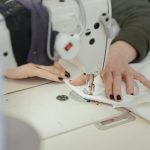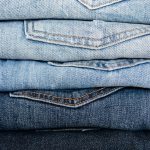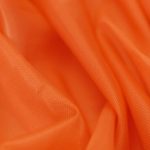When choosing between nonwoven fabric and paper, you’ll find nonwovens offer superior strength, durability, and breathability, making them great for reuse and filtration. Paper, on the other hand, excels in printability, disposability, and biodegradability but tears easily and absorbs moisture. Nonwovens may cost more upfront but last longer, while paper is often cheaper and easier to recycle. Understanding these differences can help you pick the right material for your specific needs and goals.
Table of Contents
Key Takeaways
- Nonwoven fabrics are stronger and more tear-resistant than paper due to bonded fibers and advanced manufacturing techniques.
- Paper offers better printability and is biodegradable, but absorbs moisture easily, reducing its durability.
- Nonwoven fabrics provide superior breathability and water resistance, making them ideal for filtration and reusable items.
- Paper production is resource-intensive with significant water and energy use, while many nonwovens use synthetic or recyclable fibers.
- Nonwoven fabrics have higher initial costs but lower replacement frequency, whereas paper is cost-effective for disposable and lightweight uses.
Composition and Manufacturing Processes
When comparing nonwoven fabric and paper, understanding their composition and manufacturing processes is key.
Nonwoven fabric is made by bonding or interlocking fibers through mechanical, thermal, or chemical methods. You’ll find synthetic fibers like polypropylene or natural fibers in nonwovens, giving them versatility.
Nonwoven fabrics bond fibers mechanically, thermally, or chemically, using synthetic or natural fibers for versatile applications.
Paper, on the other hand, is primarily composed of cellulose fibers derived from wood pulp. The manufacturing process for paper involves pulping, pressing, and drying, which forms a dense, flat sheet.
Nonwoven production often skips the traditional weaving or knitting step, allowing for faster, more flexible creation of materials.
Strength and Durability Comparison
Strength plays an essential role in deciding whether nonwoven fabric or paper fits your needs. Nonwoven fabrics typically outperform paper in strength due to their fiber bonding techniques, which create a tough, tear-resistant material.
When you handle nonwoven fabric, you’ll notice it resists stretching and ripping better than paper, especially under stress. Paper, on the other hand, tends to tear more easily and loses integrity when wet or heavily handled.
If your project demands repeated use or exposure to mechanical forces, nonwoven fabric is likely the better choice. However, for lightweight, disposable applications, paper might suffice.
Ultimately, you should consider how much wear and tear your material will face to pick the option that offers the durability you require.
Breathability and Moisture Resistance
When choosing between nonwoven fabric and paper, you’ll want to contemplate how well each lets air pass through and resists moisture.
These factors directly affect comfort, especially if the material touches your skin.
Let’s explore the differences in air permeability and water repellency to see which option suits your needs best.
Air Permeability Differences
Although both nonwoven fabric and paper serve as barriers, they differ considerably in air permeability, which affects breathability and moisture resistance.
When you choose between them, consider how much air can pass through, as this influences comfort and effectiveness.
- Nonwoven fabrics generally allow more air flow, enhancing breathability.
- Paper tends to have lower air permeability, making it less breathable.
- Higher air permeability in nonwoven fabrics helps reduce moisture buildup.
- Paper’s limited air passage can trap moisture, affecting dryness.
- The structure of nonwoven fabrics creates tiny channels for air while maintaining barrier properties.
Understanding these differences helps you select the right material for applications where balancing airflow and moisture control is key.
Water Repellency Levels
Since water repellency directly impacts both breathability and moisture resistance, you’ll want to understand how nonwoven fabrics and paper differ in this area.
Nonwoven fabrics often feature engineered fibers and surface treatments that make them more water-resistant while still allowing some airflow. This means they can block moisture effectively but won’t trap heat or sweat as much.
Paper, on the other hand, tends to absorb water quickly unless specially coated, which reduces breathability considerably.
If you need materials that handle moisture without becoming soggy or losing structural integrity, nonwoven fabrics generally perform better.
Impact on Comfort
How does comfort factor into your choice between nonwoven fabrics and paper? When it comes to breathability and moisture resistance, nonwoven fabrics generally offer superior comfort. They allow air to circulate, reducing sweat buildup and skin irritation, while effectively managing moisture.
Paper, on the other hand, tends to be less breathable and can become soggy, compromising comfort during extended use.
Consider these key comfort aspects:
- Nonwoven fabrics promote better airflow, keeping you cooler.
- Moisture resistance in nonwovens helps prevent dampness.
- Paper lacks flexibility, which may cause discomfort.
- Nonwovens dry faster, maintaining comfort longer.
- Paper’s reduced breathability can lead to skin irritation.
Choosing nonwoven fabrics means prioritizing comfort, especially for prolonged wear or contact.
Environmental Impact and Sustainability
When you evaluate the environmental impact and sustainability of nonwoven fabric versus paper, you’ll find that both materials offer unique benefits and challenges.
Nonwoven fabrics often use synthetic fibers derived from petroleum, which can raise concerns about fossil fuel consumption and biodegradability. However, many nonwovens are now made from recycled or biodegradable materials, improving their eco-friendliness.
Paper, on the other hand, is renewable and biodegradable but typically requires significant water, energy, and chemical use during production.
You’ll also want to take into account the end-of-life phase; paper decomposes faster, while some nonwovens may persist longer in landfills unless specifically designed to break down.
Ultimately, your choice depends on the specific application and how you prioritize renewable sourcing, production impact, and disposal options.
Cost Analysis and Economic Considerations
When comparing nonwoven fabric to paper, you’ll notice differences in manufacturing costs that can impact your budget.
While nonwoven materials might cost more upfront, they often offer long-term economic benefits through durability and reuse.
Understanding these factors helps you make a smarter investment for your needs.
Manufacturing Cost Differences
Although both nonwoven fabric and paper serve similar functions, their manufacturing costs differ considerably due to variations in raw materials, production processes, and energy consumption.
When you compare these materials, keep in mind factors like fiber types, machinery, and labor intensity that directly impact expenses. Nonwoven fabric often requires synthetic fibers and specialized equipment, which can increase upfront costs.
Meanwhile, paper relies on wood pulp and a more established production line, sometimes lowering initial investment but adding costs in resource usage.
Consider these key manufacturing cost differences:
- Raw material pricing (synthetic fibers vs. wood pulp)
- Energy consumption during production
- Speed and efficiency of manufacturing lines
- Equipment maintenance and depreciation
- Labor requirements and skill levels needed
Understanding these helps you evaluate which option fits your budget best.
Long-term Economic Benefits
Since nonwoven fabric and paper differ in upfront costs, you’ll want to evaluate their long-term economic benefits before making a decision.
Nonwoven fabrics generally cost more initially, but their durability and reusability often save you money over time. They resist tearing and moisture better, reducing replacement frequency.
Paper, while cheaper upfront, tends to wear out faster, leading to frequent repurchases. Additionally, nonwoven fabrics can lower waste disposal costs due to their longevity.
Consider maintenance expenses too; nonwoven materials often require less handling and replacement labor, cutting operational costs.
Common Applications and Use Cases
Because nonwoven fabric and paper serve different strengths, you’ll find each material shines in distinct applications.
Nonwoven fabrics excel where durability, flexibility, and filtration matter, while paper suits you best for disposability and ease of printing.
Nonwoven fabrics thrive in durability and filtration; paper offers convenience and excellent printability.
When choosing between them, consider how these applications align with your needs.
Here are common uses for each:
- Nonwoven Fabric:
- Medical masks and gowns
- Geotextiles for construction
- Cleaning wipes and filters
- Automotive interior components
- Agricultural crop covers
- Paper:
- Packaging and wrapping
- Printing and writing materials
- Disposable tableware and napkins
- Newspapers and magazines
- Grocery bags and cartons
This way, you can pick the material that fits your specific project perfectly.
Frequently Asked Questions
Can Nonwoven Fabrics Be Recycled Like Paper?
Imagine sorting puzzle pieces from different sets; you can’t always fit nonwoven fabrics into paper’s recycling bin. You won’t recycle nonwovens like paper because their materials and processes differ, so check local guidelines before tossing them in.
Are Nonwoven Fabrics Safe for Food Packaging?
You can use nonwoven fabrics safely for food packaging if they meet food-grade standards. They’re often designed to be hygienic, breathable, and resistant to contamination, but always check certifications before choosing them.
How Do Nonwoven Fabrics Perform in Extreme Temperatures?
Wondering if nonwoven fabrics can handle extreme temperatures? You’ll find they generally resist heat well but might degrade under intense cold or heat. So, always check specific fabric types before using them in harsh conditions.
Can Paper Be Treated to Mimic Nonwoven Fabric Properties?
You can treat paper to mimic some nonwoven fabric properties, like adding coatings or bonding agents for strength and water resistance. However, it won’t fully match nonwoven fabric’s durability, flexibility, or breathability in many applications.
What Are the Tactile Differences Between Nonwoven Fabric and Paper?
You’ll notice nonwoven fabric feels softer, more flexible, and breathable, while paper is usually stiffer and rougher. Nonwoven’s texture is consistent, but paper can feel grainy or coarse depending on its finish.
- What Is PET Spunbond Nonwoven Fabric? - July 11, 2025
- How to Test the Quality of a Nonwoven Fabric - July 11, 2025
- The Benefits of Using Nonwoven Wallpaper in Your Home - July 11, 2025







